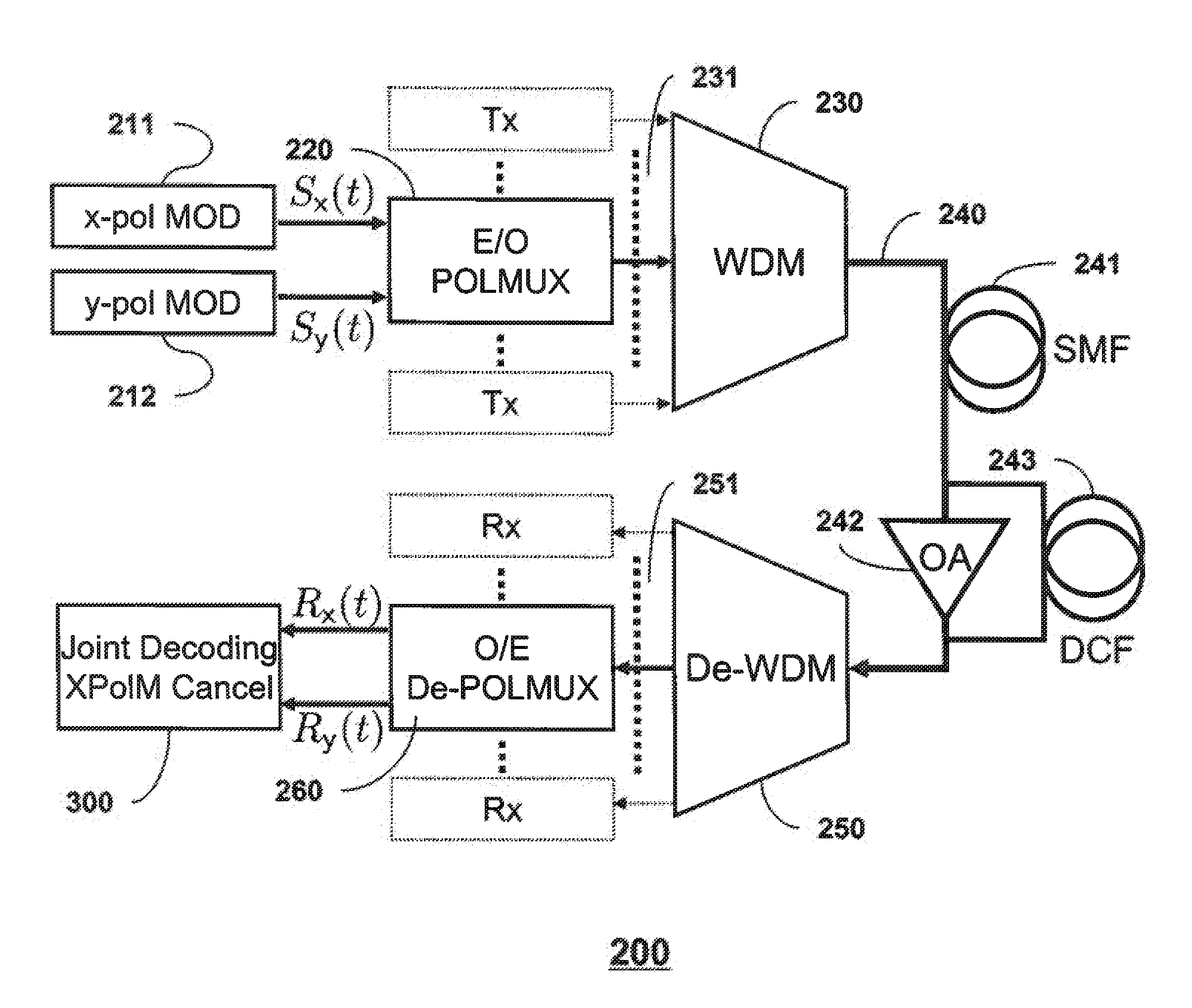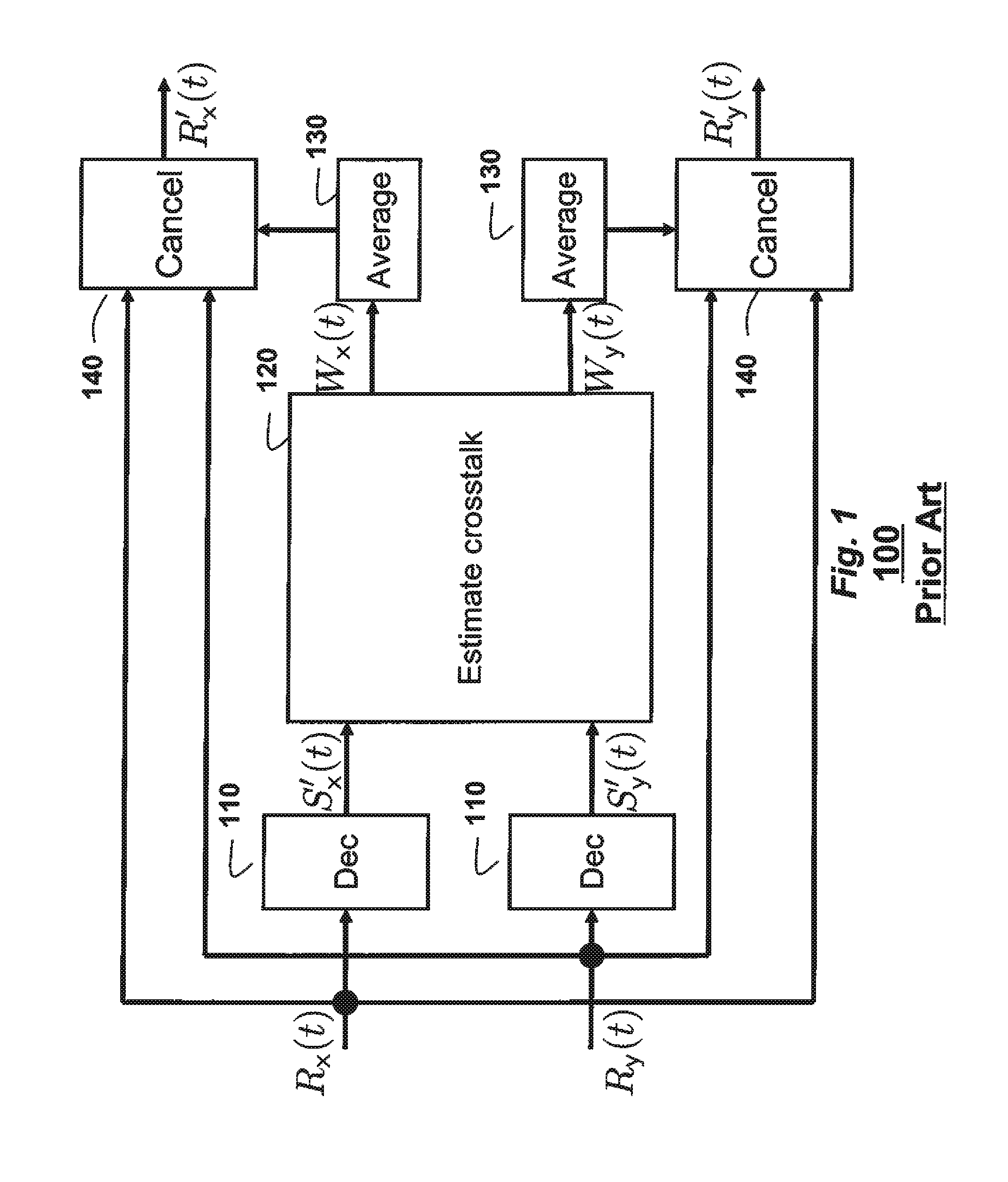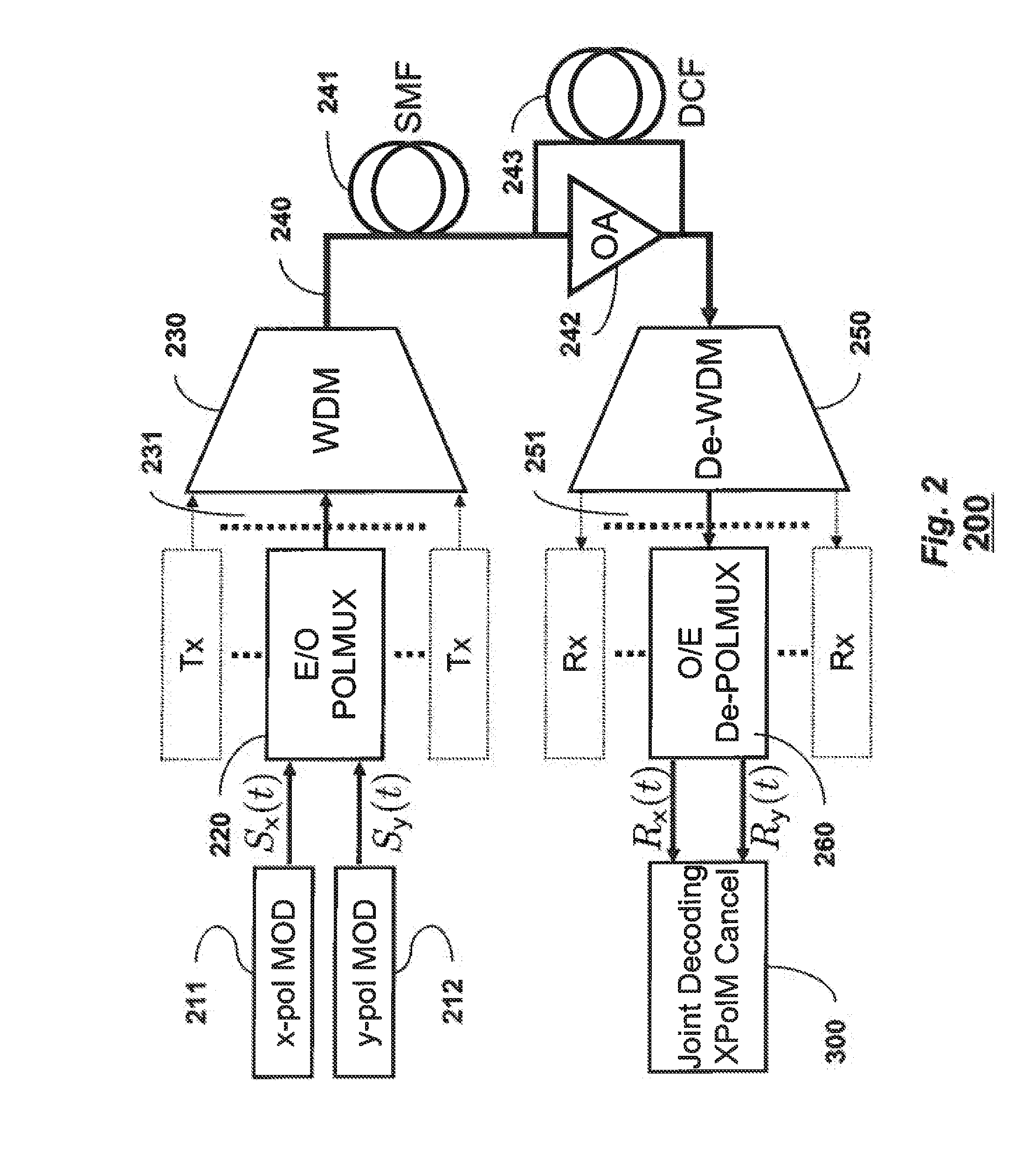Adaptive Cross-Polarization Modulation Cancellers for Coherent Optical Communication Systems
a technology of optical communication system and canceller, applied in the field of optical communication system, can solve the problems of significant performance degradation in bit error rate or quality factor of dp coherent optical system, polarization to change, cross-polarization modulation (xpolm), etc., and achieve the effect of enhancing the performance of joint ml decoding with per-survivor processing and facilitating the differentiation of dp signals
- Summary
- Abstract
- Description
- Claims
- Application Information
AI Technical Summary
Benefits of technology
Problems solved by technology
Method used
Image
Examples
Embodiment Construction
[0014]FIG. 2 shows the preferred embodiments of coherent fiber-optic communication systems 200 which employ POLMUX and WDM. At a certain channel of interest, x-polarization signal Sx(t) and y-polarization signal Sy(t), where t denotes a time instance, are generated by electrical modulators such as DP-quadrature phase-shift keying (QPSK) 211 and 212, respectively. After passing through an electrical filter, x / y-polarization signals Sx(t) and Sy(t) are up-converted to optical wave by an electrical-to-optical (E / O) modulator with POLMUX 220, which orthogonally polarizes Sx(t) and Sy(t).
[0015]The up-converted optical signal is then multiplexed with a number of different wavelength lights 231 by a WDM multiplexer such as arrayed waveguide grating device 230. The WDM optical signals propagate through an optical fiber channel 240, which consists of multiple-span sets of single-mode fibers (SMF) 241, optical amplifiers (OA) such as Erbium doped fiber amplifier 242, and dispersion compensati...
PUM
 Login to View More
Login to View More Abstract
Description
Claims
Application Information
 Login to View More
Login to View More - R&D
- Intellectual Property
- Life Sciences
- Materials
- Tech Scout
- Unparalleled Data Quality
- Higher Quality Content
- 60% Fewer Hallucinations
Browse by: Latest US Patents, China's latest patents, Technical Efficacy Thesaurus, Application Domain, Technology Topic, Popular Technical Reports.
© 2025 PatSnap. All rights reserved.Legal|Privacy policy|Modern Slavery Act Transparency Statement|Sitemap|About US| Contact US: help@patsnap.com



